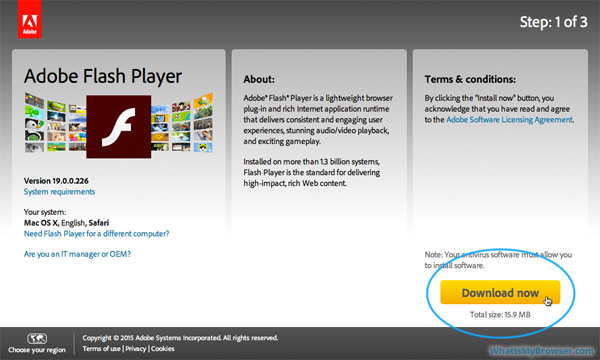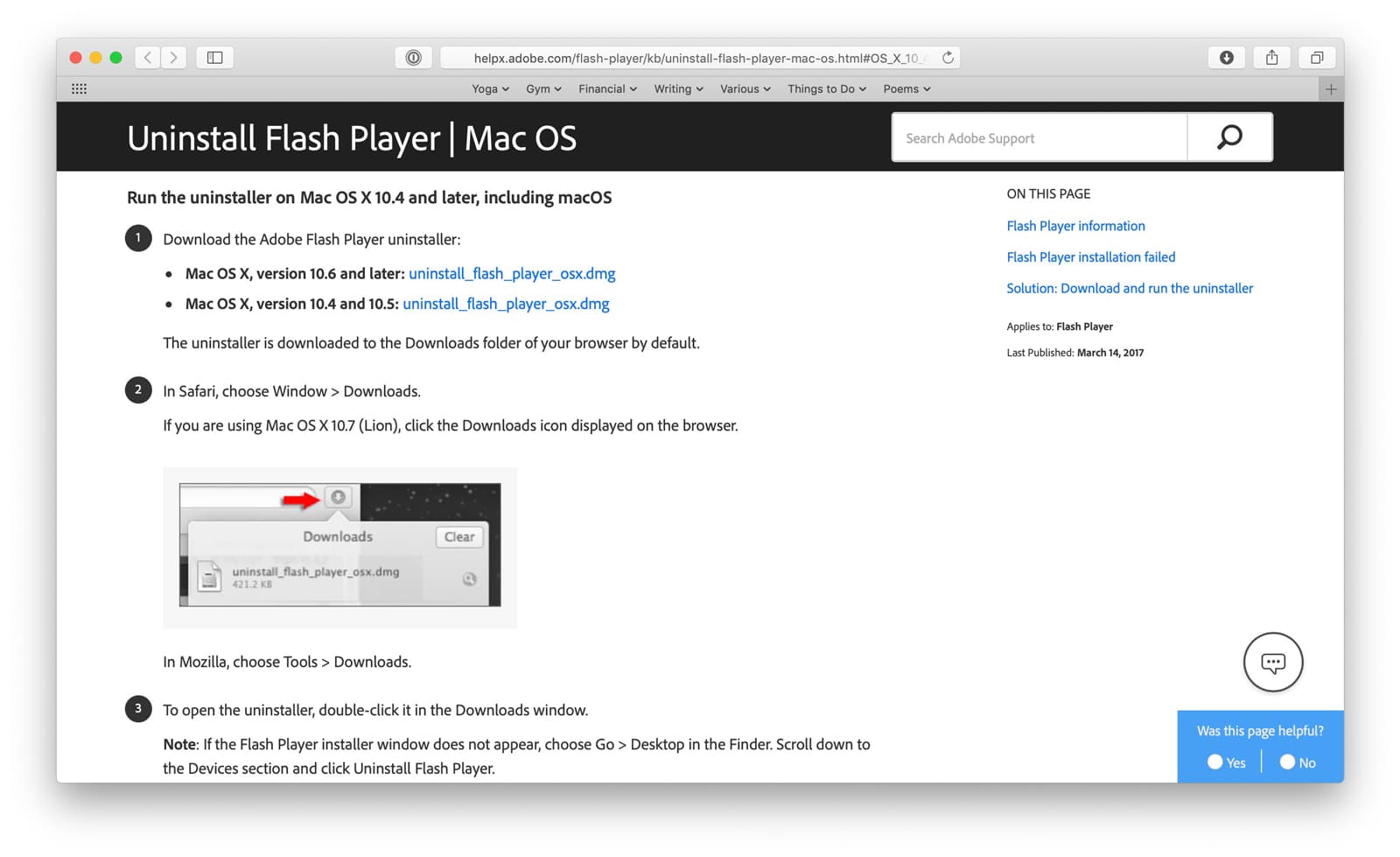

(Meanwhile, Safari for iOS has never supported Flash you might remember the late Apple cofounder and CEO Steve Jobs’ essay, “ Thoughts on Flash,” which he published in April 2010 in retrospect, his hard line stance against Flash may be one reason for its eventual demise.)Īnd yet, in spite all of these things, here we have the most prevalent Mac malware of the day continuing to find success in tricking victims into supposedly “updating their Flash Player.” How is this tactic still working? Old habits die hardĪs Jobs noted in his aforementioned Thoughts on Flash, the software had “one of the worst security records in 2009,” and was “the number one reason Macs crash,” in spite of Apple having worked with Adobe for “several years” to try to remedy these issues. The vast majority of sites that once relied on Flash-based content have converted to HTML5 or other multimedia formats.įurthermore, many Web browsers have deprecated or completely dropped all support for Flash Player, with Safari for Mac evidently planning to stop supporting it in the next version. Shouldn’t everyone have learned their lesson nearly a decade ago, and started being more careful about Flash updates?Īnd moreover, who even uses Flash anymore? Adobe itself announced in July 2017 that it intended to terminate all Flash Player updates by December 31, 2020. On the one hand, it may seem a bit surprising that fake Flash Player installers are still an effective Trojan horse. Why is malware still disguised as Flash Player?įake Flash Player installers are nothing new Intego discovered the first variant of the now-infamous OSX/Flashback Trojan in September 2011, which was widely reported to have infected 600,000 Macs by April 2012, and there were still at least 22,000 Macs infected as of January 2014. That’s interesting for at least a couple of reasons.

So what does Shlayer malware look like? It is often delivered in the form of a fake Adobe Flash Player installer. Malware Adobe Flash Player is dead, yet 10% of Macs are infected with fake Flash malwareĪ recent report (covered by Ars Technica, WIRED, and others) claims that OSX/Shlayer- first discovered by Intego in February 2018-continues to be the most prolific Mac malware in the wild, with 1 in 10 Macs infected by it.Īlthough Intego does not currently maintain infection rate statistics of VirusBarrier X9 customers, our malware research team can confirm that Shlayer may be found far and wide: in high-ranking Google search results, in deceptive in-browser advertisements and alerts, on expired domains that have been purchased by malware distributors, and more.


 0 kommentar(er)
0 kommentar(er)
